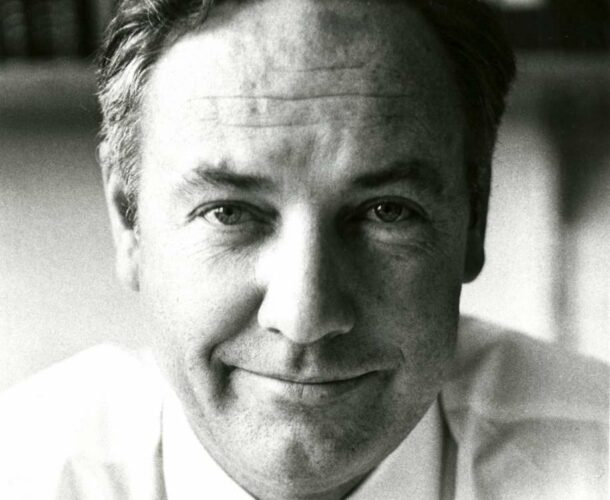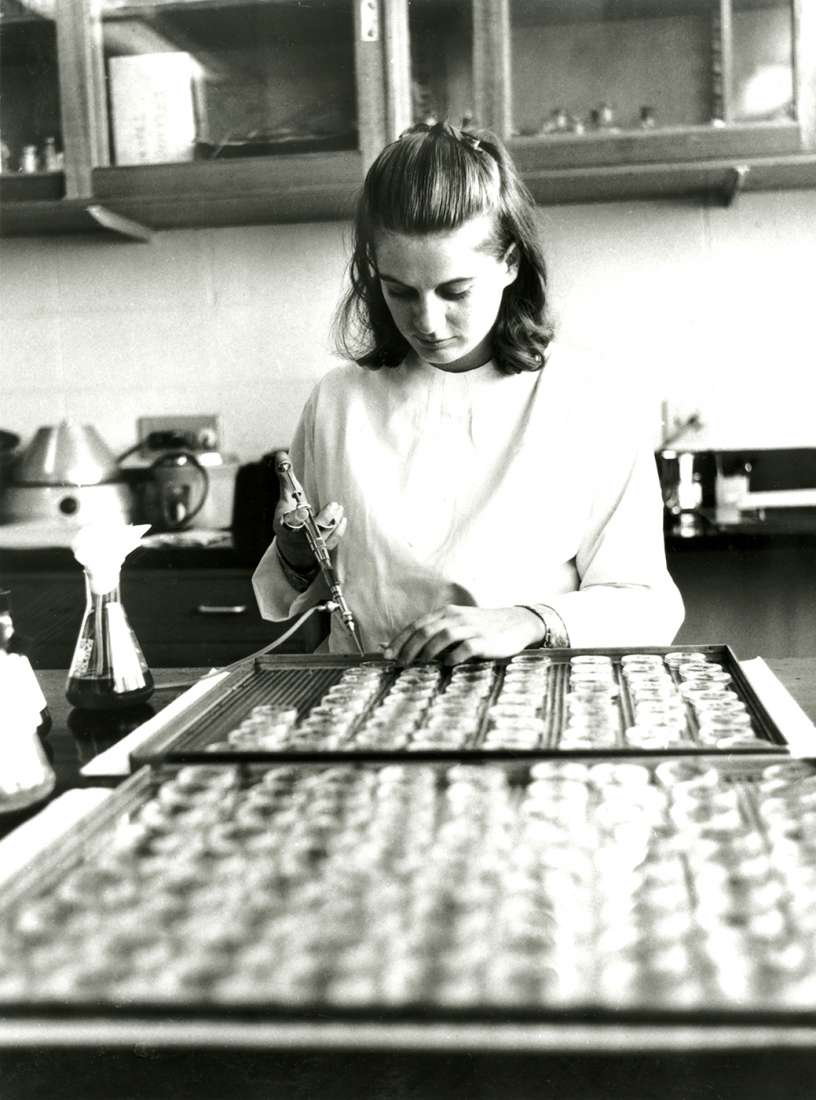In the late 1960s, Professor Donald Metcalf recognises that, if a serious attempt was to be made to purify the CSFs, dedicated biochemistry skills would be required. By the 1970s, efforts to purify colony stimulating factors (CSFs) were in full swing.
Early experiments in human urine
Purifying the CSFs was an almost impossible task, one that took 11 years. It required the scientific world to ‘catch up’ in developing new biochemistry techniques in order to achieve. Early experiments used human urine as a source of CSF. Metcalf put a “poor unfortunate PhD student, Richard Stanley onto this ‘simple’ job of purifying CSF”.
“We started with human urine because it was a good, cheap starting material,” Metcalf says. “We had buckets for collection of urine in the institute. First you had to take the cigarette butts out of it – these were the days when you could smoke in a research institute – and then you had to dialyse it in great evil-smelling tanks in 50 litre batches. Great stuff!”
But it was the arrival of young Melbourne boy, later Professor, Tony Burgess who stumbled upon an intriguing morsel of science that would lure him back to Melbourne, reroute his research ambitions, and position him at the centre of some of the most powerful laboratory work of his era.
A biochemist steps in to the CSFs fray
“I started my research life as a physical biochemist,” Burgess says. His PhD focus was to simulate protein folding – the mechanism by which a protein structure assumes its functional shape. He took a postdoctoral position at Cornell University in the United States, then followed his supervisor to the Weizmann Institute in Israel, though it was a nervous time in the wake of the Yom Kippur War.
On his first evening in Israel Burgess was invited to a lecture. “I had been at Cornell for a while wondering what I would do with my life. This lecture was by a chap called [Professor] Leo Sachs, and he described the fact that you could take a pure protein, and put it on pure cells, and they would change from stem cells into blood cells. I thought this was pretty neat. I was a chemist – I knew about proteins, but I didn’t know anything about cells.”
A trawl through the literature revealed that Sachs’ discovery of this phenomenon had coincided with that of another team – Professor Don Metcalf at the Walter and Eliza Hall Institute and The University of Melbourne’s Dr Ray Bradley. Metcalf was pursuing his epic investigation of the growth factors that stimulate blood cell formation, in particular granulocyte colony stimulating factor (G-CSF) and related cytokines (proteins). Burgess sent off a letter inquiring whether he might join him.
Path to purifying GM-CSF
He got back an encouraging response from the then Walter and Eliza Hall Institute director, Professor Gus Nossal, “saying they would love to have me – if I could get my own salary. He suggested I should apply for a Queen Elizabeth II fellowship”. As it happened Metcalf was visiting Israel, and provided some counsel on what Burgess would need to do to succeed. By 1974 he had his fellowship.
“I walked into Don Metcalf’s office and said ‘can I have the purified protein because I want to start changing these cells’. He got off his chair and went out to the lab and came back with this little falcon tube, with some pink fluid and some lungs floating in it. He said ‘well, the molecule’s in there, you have to get it out, and then we can start to use it’.” It took three years. This was the first purified CSF (GM-CSF).
As Nossal later observed, this monumental achievement by Burgess and his colleagues “resulted from progressive experiments on 140 batches of mouse lung-conditioned medium, each derived from 800 mice”.1
“The apocryphal story is that when I had the purified molecule, I went to Metcalf and said ‘well, can I have the stem cells so I can start to change them?’,” Burgess recalls. “So he went out to the lab and came back a few minutes later and had this mouse by the tail and said ‘well, the stem cells are in there, you’ve just got to get them out’.”
And the real story? “He didn’t want us to work on the stem cells,” Burgess explains. “He was the cell biologist, and we were the protein chemists, and the way Don worked was that we weren’t allowed to do any cell biology. Fortunately he got a bad back, so Nick Nicola and I were able to do some stem cell work of our own.”
Cloning CSFs
Ultimately the combined efforts of Burgess and Metcalf led to the formation of the teams responsible for the molecular cloning of CSFs, the resource for clinical studies investigating their potential. CSFs stimulate stem cells in bone marrow to form specialised white blood cells that defend the body against infection. Therapies enlisting them have helped more than 20 million cancer patients to survive the rigours of chemotherapy.
Around this time the Ludwig Institute for Cancer Research was exploring setting up a Melbourne campus. Its mission was to support investigation on solid tumours rather than in blood, and Burgess was appointed director after promising to apply himself to this. The Ludwig was an independent group located inside the Walter and Eliza Hall Institute, collaborating with the Walter and Eliza Hall Institute and the Department of Surgery at The Royal Melbourne Hospital.
“Ludwig funded our expansion to what I would say was one of Australia’s world-class research programs during the 1980s and ‘90s,” says Burgess. “The Ludwig teams led by Ashley Dunn and George Morstyn worked alongside the Walter and Eliza Hall Institute teams to provide molecular biology and clinical capabilities, respectively.”
This relationship underwrote another watershed phase in the CSFs story. “George Morstyn’s discovery of peripheral blood stem cells while he was working with Uli Dührsen at the Walter and Eliza Hall Institute changed bone marrow transplantation clinically for good around the world, no question about it. But they don’t get much credit, which is a sad thing.”









